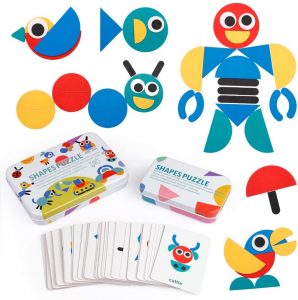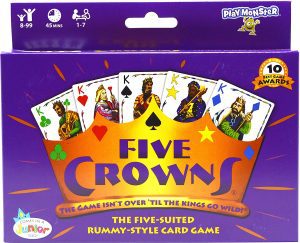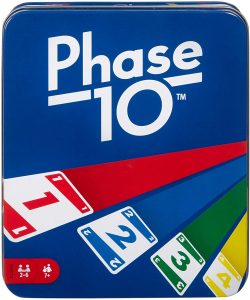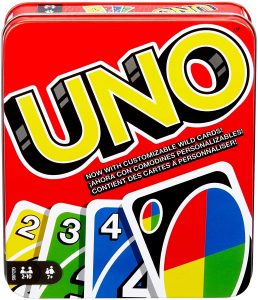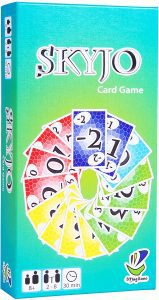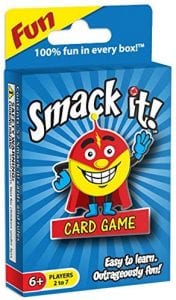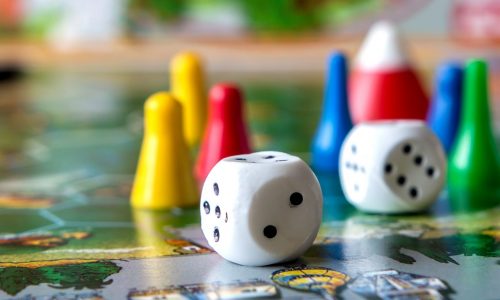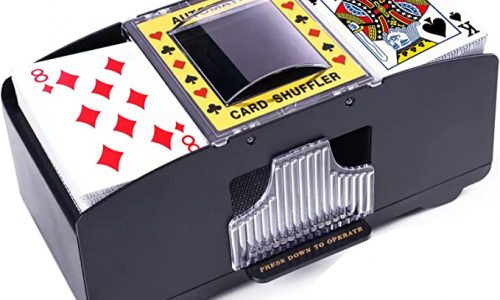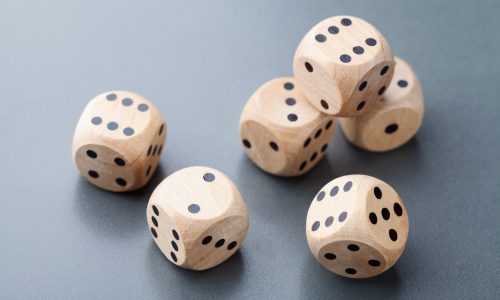The Best Card Games

Our Review Process
Don't Waste Your Money is focused on helping you make the best purchasing decision. Our team of experts spends hundreds of hours analyzing, testing, and researching products so you don't have to. Learn more.
Our Picks For The Top Card Games
With 36 wooden pieces and 60 cards, this Tangram puzzle game has children building items to match patterns on each card. Shapes include animals, bugs, birds and objects. The easy-grip wooden blocks have no sharp edges and the water-based paint will last.
For ChildrenMade for children between ages 3-6, this Tangram-style card game with wooden blocks is both educational and fun.
This five-suited game with a rotating wild card is styled after rummy. It’s recommended for ages 8 to adult and works well for one to seven players. It's also quick and easy to learn, making it a great option for family game night. You can even play a solitaire version alone!
Hours of FunThis five-suited rummy-style game will provide hours of gameplay through rounds that are quick, easy and fun.
This card game brings a new twist on an old classic. With Phase 10, you get rummy-style play with 10 different phases and wild and skip cards to add some spice to each round. You can get a version in a simple box, or opt for a decorative tin that turns it into a great gift!
Awesome PresentThis rummy-style card game is offered either in a regular box or in a decorative tin for perfect and easy gift-giving.
A classic family game night favorite, this version of the popular card game comes in a decorative tin that makes storage a breeze. You’ll get 112 cards in each set, along with instructions and game rules. This game is recommended for ages 7 and up.
For All AgesIf you’re looking for a card game for family game night, this kid-friendly modern classic is a great way to go.
Buying Guide
Few games are as convenient as those involving playing cards. For one thing, card games are easy to store when they aren’t in use. Board games, in contrast, need a lot more dedicated space, whether it’s a shelf in the top of a closet or a storage chest in your bonus room.
Another great thing about playing cards is that they’re portable, so you can always take them on the road with you. They easily tuck into a suitcase or tote bag, and you can even keep them in your glove compartment to have on hand for long road trips with kids.
Card games take playing to the next level. Today’s games go beyond the classic card deck — although card decks that feature the four suits of clubs, diamond, hearts and spades remain a versatile and fun option. Some modern card games come with extra playing pieces that you use in combination with the cards. Some have games built into the cards themselves, which are printed with game moves and instructions.
A good card game is simply one that challenges you while also being ideal for playing with the people in your life. If you host game night with friends, you might have different needs than you would if you’re setting up a family game night.
Not all card games are designed for all age groups. Many adult card games aren’t recommended for children under the age of eight or so due to their complexity or adult content. But, you’ll find plenty of card games custom-designed for children, packed with educational features to help young minds develop.
Card games include a mix of old standbys, like rummy, and modern offerings — some of which offer a twist on the games you already know. You can also find newer classics like Uno, which can be played with regular cards but are even more fun if you buy the actual game. If you loved these activities in childhood, you’ll likely find that the learning curve is fairly small with the newer, slightly-changed versions.
What to Look For
- Some popular children’s card games combine cards with playing pieces. Children are then challenged to use those pieces to create the shape they see on the card. If you opt for this type of card game, keep in mind the many pieces that are included can easily become misplaced or damaged over time.
- Pay close attention not only to the age recommendations with the playing cards you buy but also the number of players. You’ll typically be fine as long as you have at least two players, but some card games won’t work for larger groups. Others are more fun the more people you have.
- Whether you’re purchasing a familiar, classic card game or one that’s new on the market, make sure you’ll be able to determine how to play it. Some card games come with instructions — but not all. You should be able to find directions and rules online, but it can help to check on this before you buy.
- If you’ve ever owned a card game, you probably know that the box housing them will become damaged and worn out over time. For that reason, premium card games come in metal tins that make for easy storage between uses.
- For gift-giving, pay attention to the card game’s packaging. A paper box might not make as good an impression as a decorative tin.
- Family game night brings extra challenges. You’ll need a game that challenges the adults and older kids without being too complex for younger children to join in. Games like Uno are ideal for this.
- Don’t be afraid to try out a new card game. There are many that also bring new twists on old favorites, giving you a taste of the familiar while also offering the chance to play something new.
More to Explore
Few game pieces have endured over the centuries like playing cards. As technology has changed the landscape of gaming, households still gravitate toward these small paper items that are decorated with colorful numbers and images.
Although experts still debate exactly when playing cards first came into existence, they believe the pastime began on the Eastern half of the globe, later spreading west. There was mention of paper tiles in scrolls from China’s Tang Dynasty (618 to 906 A.D.), which is commonly believed to be the first mention of playing cards.
In medieval Europe, card games became associated with scandalous behavior such as drinking and gambling, eventually leading authorities to ban them for a time. But many believe that the four suits in a deck of cards represent the four classes of that era: hearts for the clergy, spades for the nobility or military, diamonds for the merchants and clubs for peasants.

